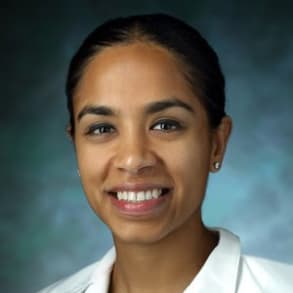Laryngologist and endocrine surgeon Vaninder Dhillon recaps a panel discussion focusing on the management of issues related to voice, swallowing and breathing after thyroid and parathyroid surgery that was held at the AAO-HNSF 2020 virtual annual meeting.
Hello, everyone. My name has been Inder Dylan, and I'm an assistant professor in the department of otolaryngology at Johns Hopkins. Within the divisions of Lauren Ecology, which is voice and swallow, as well as head and neck undercurrent surgery, which is thyroid and parathyroid surgery. Today, I'm going to be discussing a panel that I was on recently for the Academy of Otolaryngology on Thyroid and Parathyroid surgery. Particularly, this was a panel that discussed issues with voice swallowing and breathing, and patients who undergo thyroid and parathyroid surgery and how we can best identify and manage these patients early on. This is particularly important because a lot of patients have voiced swallowing and breathing concerns after surgery, and the reason for this to give some context is that the nerve that controls the ability of our vocal folds to move and for us to have good swallow function, that nerve is within the neck, in which the thyroid and parathyroid or sort of neighbors to and during dissection of the thyroid and parathyroid glands during surgery. Sometimes this nerve can get injured, Um, and it can cause dysfunction for patients. So we identify this as Lauren Jill Dysfunction or dysfunction of the lyrics or throat. So in terms of quality of life, our goals as surgeons and physicians is to provide the best outcomes for our patients. And so this panel identify two particularly important terms that are concepts in orderto sort of help and treat our patients. And those two concepts were immediate vocal cord paralysis or actual paralysis of the vocal cord after surgery. And how we can identify and treat this early on, as well as any other voice swallowing or breathing concerns patients might have, for which there is no true vocal cord paralysis. But there's still symptoms, and this we identified as partial dysfunction. So this panel grew out of a larger author panel on DWI is a discussion on how we can identify and treat these patients. In the larger scheme, we have a paper that is now been recently accepted. It has been identified and endorsed by the American Head and Neck Society and will be published by the end of the year in the Head and Neck journal. We look forward to working with our colleagues and treatment of our patients for better quality of life, and I particularly I'm very happy that we are combining voice swallow and breathing with had a neck endocrine surgery because this is a very important interest of my own, so I'm looking forward to the results and taking better care of our patients in the future.



